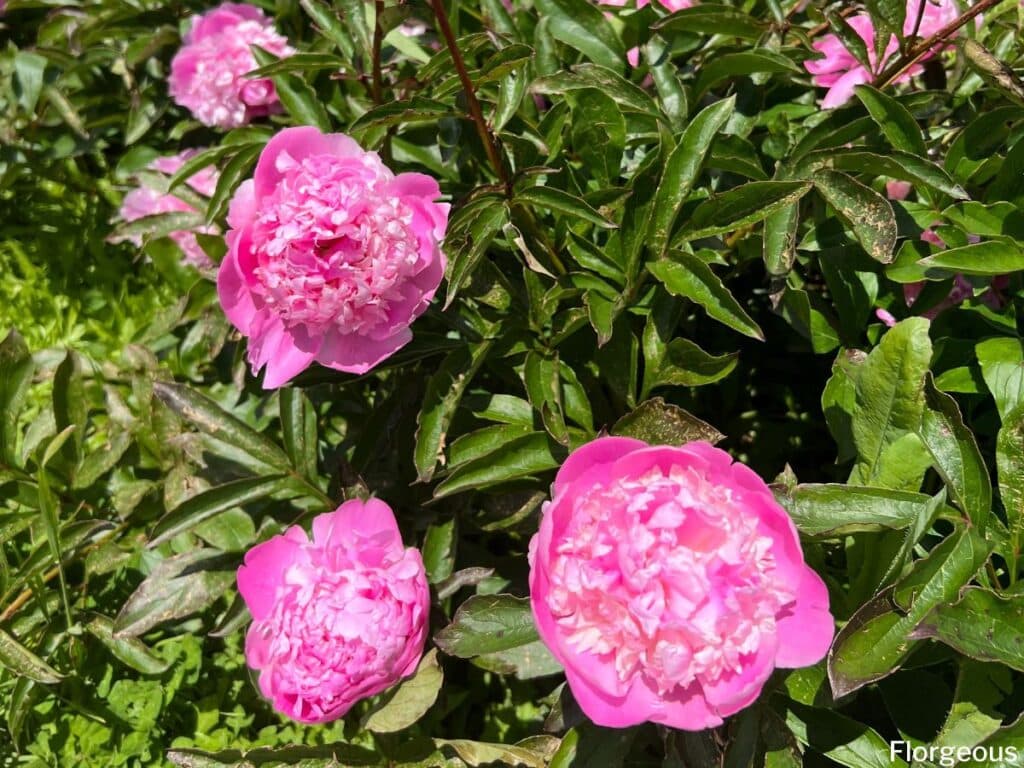With their seasonal, fascinating, and large blooms, peonies have long been a favorite flower of many gardeners and florists from different parts of the world.
Although peonies are excellent cut flowers for bouquets, weddings, table centerpieces, and large floral arrangements, they are also a reliable ornamental plant for spring and summer gardens. Their abundant blooms and bold foliage make them outstanding perennial borders.
If you are planning to add romance and colors in your garden with peonies but are not quite sure how to start, then here’s a quick peony guide for you.
Know more about the facts, different types, peony care tips and popular varieties of these fascinating flowering perennial plants by reading below.
General Description and Characteristics
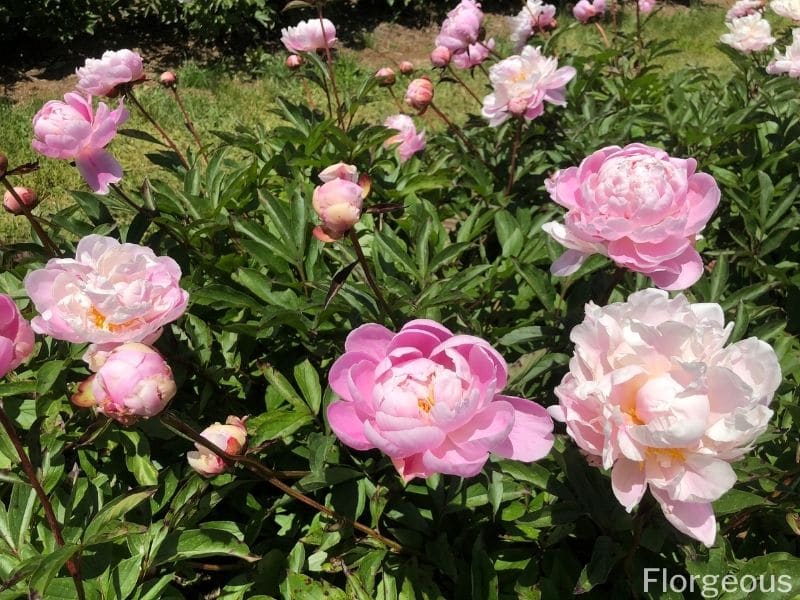
Peonies are low maintenance flowering perennial plants that add beauty and colors in gardens and landscapes, especially from spring to fall. Generally, mature peonies grow about 2 to 7 ft, depending on the type. Some are fragrant, while others are unscented.
The leaves of peonies vary depending on the type and variety of peony. Some peony leaves are glossy without any presence of hair. For some peonies, however, the leaves are dark green with some underside hairs.
Peony flowers also differ depending on the type and variety. Generally, regardless of flower forms, all peonies have five or more large outer petals and modified stamens at the center. Some peonies exhibit single flowers, while others have semi-double, double, bomb, Japanese, or anemone types. These types are discussed in detail below.
How to Grow Peonies
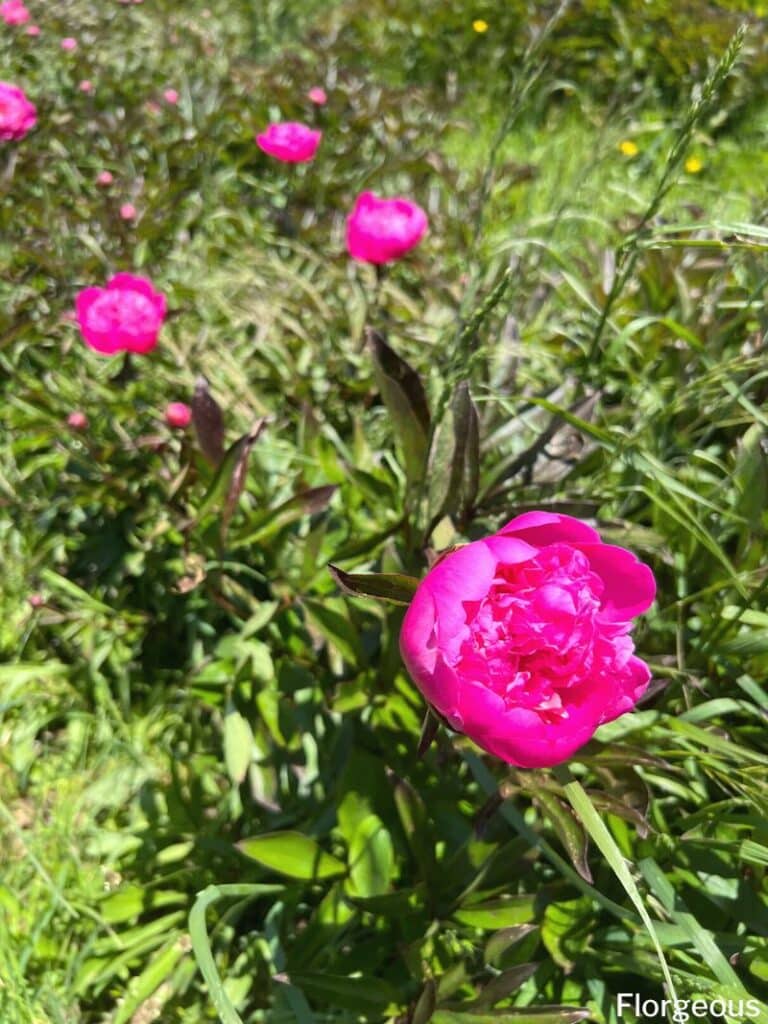
Peonies are tough perennials. Known as one of the most floriferous garden plants, peonies produce attractive blooms even with minimal care.
Peonies grow best when planted in full sun and loamy, fertile, well-drained soil. They require 6 to 9 hrs of sunlight per day. Partial shade is tolerable as the plants will still produce good foliage, but flower production will be sparse or non-existent. Plant peonies away from other trees and shrubs to maximize moisture absorption from the soil.
When planting peonies, allow ample spacing as these plants have different sizes and growing habits depending on the type.
Once established, keep peony plants undisturbed as they do not thrive well when replanted.
Propagating Peonies
While they can be a bit finicky to grow, peonies are relatively easy to propagate from cuttings.
The best time to take cuttings is in the late summer or early fall, after the plant has bloomed. With a sharp knife, cut a healthy branch that is about six inches long, and remove the leaves from the bottom half of the cutting.
Dip the end of the cutting in rooting hormone, and plant it in a pot filled with moistened potting mix. Place the pot in a warm, sunny spot, and keep the soil moist. In a few weeks, you should see new growth appearing on the cutting, and in a few months, you will have a healthy new peony plant.
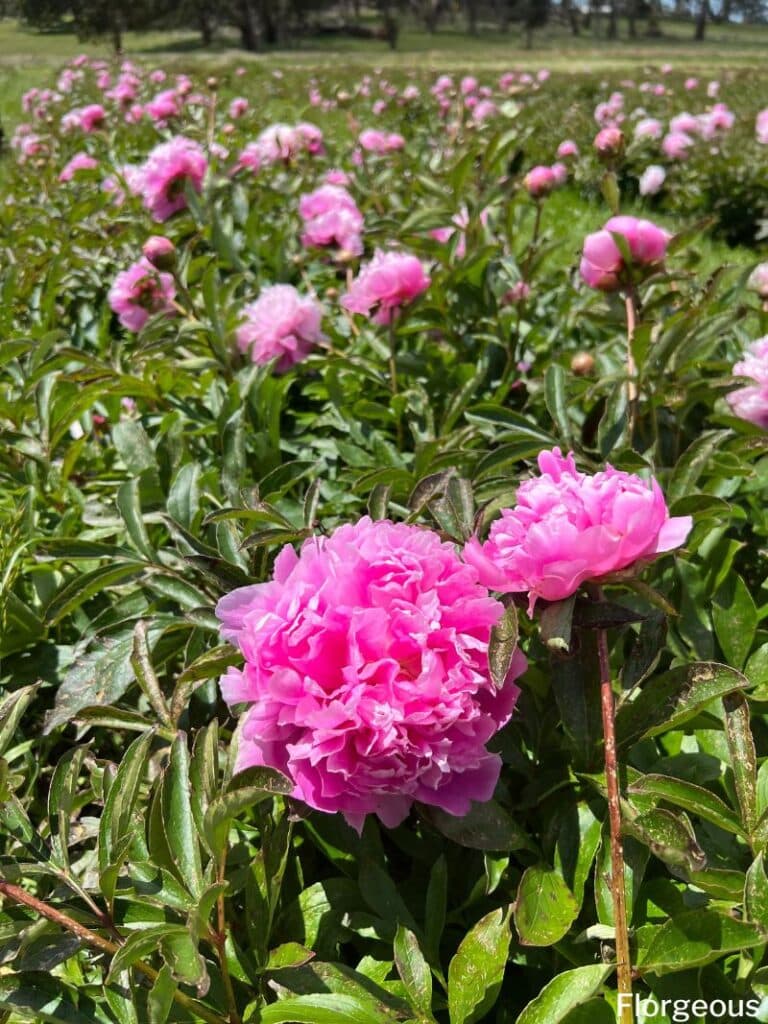
How to Care for Peonies
Caring for peonies is relatively easy as fully established plants require little maintenance. Although most peony varieties have sturdy stems, other herbaceous types have stems that need extra support in carrying the weight of their flowers.
Remove flowers (deadhead) as soon as they exhibit signs of withering to avoid the spread of diseases.
A practice called disbudding produces more abundant blooms. This can be done by removing all side flower buds and retaining just the terminal bud on each stem.
Supporting Peonies
One important consideration is whether or not to stake the peony bushes. While staking can provide support for heavy blooms, it also has the potential to damage the roots if not done carefully.
As a general rule, peonies should only be staked if the plant is tall and slender, or if the stem is weak and needs extra support. In most cases, it is best to let the entire plant grow naturally, as staking can interfere with the development of strong roots.
Fertilizer
These fragrant flowers need well-drained, nutrient-rich soil in order to thrive. Compost is a great way to add nutrients and improve drainage. To fertilize peonies, simply work compost into the top few inches of soil around the plant.
Be careful not to damage the roots when composting. Once a year is typically sufficient, but you may need to fertilize more often if the plant isn’t blooming well.
Weed Management
Weeds compete with peonies for water and nutrients, and they can also harbor diseases that can damage or kill the plants. Mulching is one of the best ways to control weeds in a peony bed.
A layer of mulch helps to prevent weed seeds from germinating, and it also makes it easier to pull existing weeds.
You might also want to grow some peony companion plants to help with weed control.
Pests and Diseases
Like other flowering plants, peonies can also be subjected to pests and diseases that may result in minimal to severe damage to the whole plant if left untreated.
Japanese beetles are a common garden pest that can cause significant damage to peony plants. The beetles feed on the leaves of the plant, which can result in extensive defoliation. In addition, the beetles may also attack the flowers and buds, which can prevent the plant from blooming.
To control Japanese beetle populations, it is important to regularly inspect your peony buds and remove any beetles that are present. In addition, you can also use a variety of insecticides to help keep the beetles under control. With proper care and treatment, you can enjoy beautiful peony blooms for many years to come.
Fungal diseases like Botrytis blight and Phytophthora blight are two of the most common diseases of peonies. Fuzzy, gray spores are often indications of Botrytis blight infestation, while a wet rot is a result of Phytophthora blight. Practicing proper sanitation helps in preventing these diseases.
Powdery mildew on peonies results in whitish powder on the surfaces of leaves, young stems, and flowers. Infested flowers may be deformed.
Other common diseases of peonies include Southern blight, mosaic virus, peony ringspot virus, and leaf curl.
Hoplia beetles, thrips, and scaled insects are the most common insect pests that infest peonies. Though ants frequent peony plants, particularly the buds because of the nectar, they do not cause any harm to the plant.
Hoplia beetles lay eggs in the soil and cause damage to the flowers’ petals and buds. Thrips also damage the blooms by causing discoloration and disfiguration. These tiny insects also cause bleaching and withering of leaves.
Peonies can also be infested with scale insects. Symptoms of scale insect infestation include yellowing of leaves, reduced and stunted growth.
Peony Toxicity
Common peonies are generally considered toxic flowers to animals like cats, dogs, and horses. The bark contains a mildly poisonous compound called paeonol that may cause vomiting and diarrhea when consumed in large amounts.
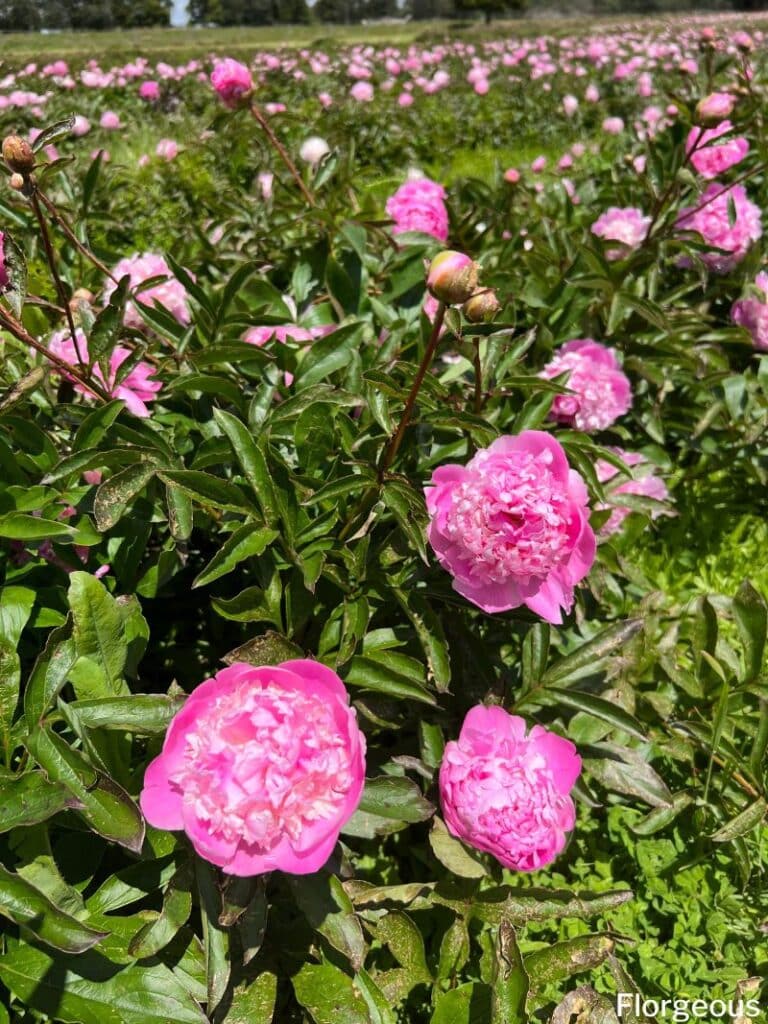
Types of Peonies You Can Plant
There are three main categories of peonies you might consider growing: Itoh peonies (also known as intersectional peonies), herbaceous and tree peonies.
Herbaceous peonies are one of the most popular types of peonies, and it’s easy to see why. These delicate flowers have a beautiful, old-fashioned look that is perfect for gardens of all sizes. They come in a wide range of colors, from pale pink to deep red, and they have a sweet fragrance that is truly intoxicating. Best of all, herbaceous peonies are incredibly easy to grow and care for.
Some common types of herbaceous peonies (Paeonia lactiflora) are categorized by the American Peony Society as:
- Single
- Full Double
- Bomb
- Semi-Double
- Anemone
- Japanese
Another type is the tree peony. Tree peonies are a type of flowering plant that is closely related to the more common herbaceous peony. Like herbaceous peonies, tree peonies have large, showy flowers that come in a variety of colors. However, tree peonies grow on woody stems and can reach heights of up to 6 feet, while garden peonies are more compact and only grow to about 3 feet tall.
Tree peonies are native to China and have been cultivated there for over 1,000 years. Today, they are also grown in other parts of Asia as well as in Europe and North America. While they are not as common as garden peonies, tree peonies make a striking addition to any garden.
Popular varieties of tree peonies are:
- Paeonia jishanensis
- Paeonia ostii
- Paeonia qiui
- Paeonia rockii
- Paeonia delavayi
- Paeonia ludlowii
And finally, Itoh peony. Itoh peonies are a type of hybrid peony that was first produced in Japan in the 1940s. As their name suggests, Itoh peonies are a cross between tree peonies and herbaceous peonies. They combine the best features of both types of plants, resulting in a showy and long-lived flower.
Itoh peonies are distinguished by their large flowers, which can be up to 10 inches in diameter. They come in a wide range of colors, including white, pink, red, and yellow. One of the most popular varieties is the ‘Bartzella’, which has deep yellow flowers with crimson streaks. Itoh peonies are relatively drought-tolerant and can thrive in a variety of soil types. They typically bloom in late spring or early summer.
Some popular types of Itoh peonies are:
- Bartzella.
- Cora Louise.
- First Arrival.
- Garden Treasure.
- Yankee Doodle Dandy.
- Keiko.
- Yumi.
- Kopper Kettle.
Interesting Facts about Peony Name and Origin
Peonies are easy-to-care flowering plants from the Paeonia genus in the botanical family Paeoniaceae.
There are a few stories about the name origin of peonies. According to Greek mythology, the botanical name Paeonia originated from the name of Paeon, a known Greek physician of the gods and a former student of Aesculapius.
Aesculapius, the Greek god of medicine and healing, became too envious of Paeon when he cured Hades’ and Ares’ wounds by using peony roots. Aesculapius wanted Paeon dead, but Zeus saved him by transforming him into a peony plant.
A different tale tells the origin of the name peony. A gorgeous nymph named Paeonia mesmerized Apollo, the son of Zeus. Because of this, ancient Greek goddess Aphrodite became furious with Paeonia and turned her into a peony plant.
Another known peony name originates from a Chinese myth. Gejin, a peony spirit, fell in love with a man and transformed into a human form. They got married and had two children.
When her husband realized that she and the children are not mortal, Gejin brought the children with her back to the spirit world to avoid his rage. She then left two tree peonies, the Gejin’s Purple and the Gejin’s White, for him to remember their two children. These two tree peonies remain as popular peony varieties in China up to this day.
In Germany, peonies are called pfingstrose, which means “Pentecost Rose”.
Did you know that peony is the birth flower for November?
Brief History of Peony Flowers
The peony plant took a significant role during the early Chinese regimen. An imperial symbol, peony blossoms were common in the Imperial Palace Gardens and referred to as “Sho Yo,” which means “most beautiful.”
During the early 8th century, peonies reached Japan, where they have been developed and hybridized to more than 300 cultivars. By the 19th century, the beautiful blooms of peony plants further made it to European gardens and revered for their landscape use and medicinal properties.
Uses of Peonies
Uses of peony plants are not limited to landscaping, gardening, nor floral arrangements. These perennial plants are also famous for their medicinal value.
In China and other countries, the roots, bark, flowers, and seeds of peonies are used to treat a variety of ailments such as night sweats, sores, abdominal pains, fevers, cracked skin, and muscle cramps.
What Do Peony Flowers Mean?
The peony flower is Indiana’s state flower. It is fascinating to learn all about a peony flower meaning and symbolism.
Peonies play a significant role in many parts of the world. A native to Asia, Europe, and North America, these outstanding ornamentals symbolize mostly positive beliefs and connotations.
The flowers are also popularly used in weddings. In fact, peonies are the official 12th wedding anniversary flowers. They represent prosperous and romantic marriage.
FAQs
Do peonies need direct sunlight?
Yes, peonies prefer full sun to partial shade. Providing them with at least 6 hours of sunlight per day promotes healthy growth and abundant blooming.
How do you keep peonies blooming?
To keep peonies blooming, ensure they receive adequate sunlight, plant them in well-draining soil, and avoid overfertilizing. Deadhead spent flowers to encourage additional blooms and support the plant with stakes if needed to prevent the heavy flowers from bending or breaking the stems.
Are peonies hard to maintain?
No, Peonies are generally low-maintenance plants once established. They are resilient, long-lived perennials that require minimal care beyond regular watering, occasional fertilizing, and division every few years to rejuvenate the plant.
Do peonies only bloom once?
Yes, peonies bloom once a year from early spring to early summer, but the blooming period can last several weeks. With proper care and deadheading, some peony varieties may produce multiple flushes of blooms throughout the growing season.
Why do my peonies keep dying?
Several factors could cause peonies to decline or die, including overwatering, underwatering, inadequate sunlight, poor soil drainage, pests, diseases, or environmental stressors. Assess the plant’s growing conditions and adjust care accordingly to address the issue and prevent further decline.
Did you find this peony beginner’s guide useful and informative? Check out our article on all flowering plants for more information about flowers similar to peonies.
See more:

